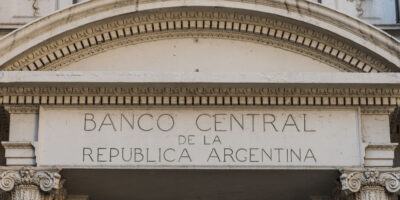Setting Aside My (Fractional) Reservations
The recent Soho Forum debate between George Selgin and Bob Murphy on April 16 revived the longstanding (and seemingly never-ending) controversy over whether fractional-reserve banking contributes to the business cycle. The debated statement was that “fractional reserve banking, whether practiced under a gold standard or in a modern fiat-money system, poses a threat to the stability of market economies.” Murphy argued in the affirmative, while Selgin argued in the negative.
The debate itself (which can be found in its entirety here) is very informative for those interested in both the history of the debate and the theoretical question of what role bank-issued money should play in a market economy. This question has been of particular interest to me ever since I began researching it as a curious teenage freshman journalism student trying to make sense of the financial crisis in 2008–9.
Like many of the respondents at the Soho Forum who were persuaded to change their vote on the resolution in favor of Selgin, I was eventually converted to the pro-fractional-reserve camp. I didn’t change my allegiance because I abandoned my Austrian bona fides. Nor was I beguiled by any “dishonest goldsmiths.” Instead, I was converted by the strength of the pro-fractional-reserve arguments put forward by the likes of Selgin and Lawrence H. White, two of the preeminent scholars in the modern free banking school.
What about their arguments converted me? A full-length analysis of the debate over the legal and economic merits of fractional-reserve banking would go beyond the scope of a single short article. Instead, I recommend that those who are interested read the full-length explanation I wrote last year. In the article, I break down why fractional-reserve banking is legally legitimate and also beneficial to economic growth. I also delve into the theory of why it need not lead to the sort of business cycle Austrians warn about, and the history of why 100 percent reserve banks were always started by or propped up by governments. My goal in writing the article was to consolidate my years of thinking and research on the topic into something of a one-stop shop that future students could refer to. But I of course recommend that those who are interested take the time to read the original material that I cite.
Although the debate over the stability of fractional-reserve banking is especially common among scholars influenced by the works of Mises and Hayek, it is by no means limited to them. The debate over fractional-reserve banking played a central role in the 1930s during the Great Depression, when dozens of prominent American economists signed on to the Chicago plan, so named because its leading authors were prominent economists at the University of Chicago, including Henry Simons and Frank Knight.
Although their proposals to eliminate fractional-reserve banking never materialized as law, they heavily influenced a generation of scholars including future Nobel laureates Milton Friedman (who later withdrew his support for a 100 percent reserve system) and James Buchanan. They have also popped up after every major financial crises over the past 80 years, becoming especially prominent in the wake of the global financial crisis of 2008–9, when numerous economists argued we should revisit the proposals from the original Chicago plan. In a working paper with the newly minted PhD Cameron Harwick, I review and rebut these more recent “narrow banking” proposals from scholars outside the Austrian orbit.
Selgin noted in his summary remarks at the Soho Forum debate, “We should not blame fractional reserve banking for problems that are attributable to governments through central banking and unwise regulation.” Given the ample flaws in our current monetary-financial system, we might fall prey to the argument that we should discard our current fiat-backed fractional-reserve system in its entirety. But the theoretical and historical evidence strongly supports the claim that fractional-reserve banking is consistent not only with financial stability but also with more robust economic growth and development. There’s no need to throw the baby of fractional-reserve banking out with the bathwater of central banking.











